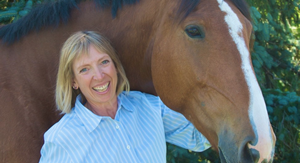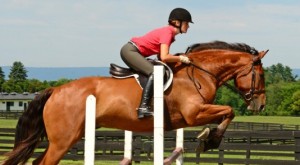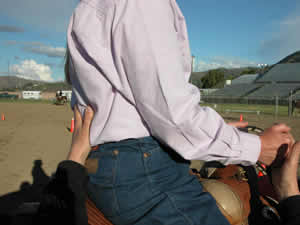
Do you pull on your horse’s mouth even though you know you shouldn’t? Does your instructor tell you to “give to your horse” all the time? Do you try to throw away the reins after you have used them in an attempt to stop yourself from pulling?
It can be difficult to take a contact or a feel of your horse without pulling. Whether that is through the reins and bit or a rope halter and lead, you need to communicate to your horse. But how can you use your reins kindly? Here’s a quick tip to help you stop pulling, start giving and improve your communication with your horse.
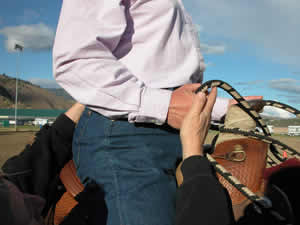
The next time you ride notice what you do when you ask your horse to move off, slow down or stop. Do you hollow or round your back? Do your elbows move behind your body? Do your hands get closer to your body? Does your body move forward towards your hands? Either way, if the distance from your hands to your body decreases when you use your reins, you are probably pulling on your horse’s mouth.
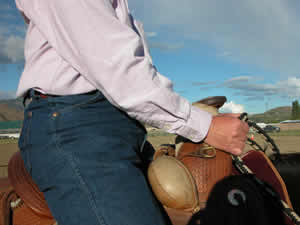
Many riders try to solve this problem by throwing their hands forward immediately after they have pulled back on the horse’s mouth. But a sudden release can disturb the horse’s balance. The horse may move off or slow down but he will not be able to carry himself. Instead, he has to ‘catch’ you by falling on the forehand. As a result transitions will be rough and abrupt instead of smooth and efficient.
Think of ballroom dancing with someone who suddenly grabs you and then throws you away. Dancing will be unpleasant and you will become apprehensive. When dancing with a good partner who is in self-carriage your anxiety decreases and you can listen and respond to your partner’s subtle signals. This is how you want to ride your horse, like a good dance partner.
A good rider has a stable body position, which is unaffected when using the reins. The rider’s seat provides the necessary support to guide the horse without pulling. If you are unstable you will pull. Grabbing and pulling are instinctive and therefore difficult to stop until you feel secure. Developing a solid seat similar to a ballroom dance position, where you maintain a frame between your body and your arms, is the key.
To find this solid frame have someone press against your lower back and your soft fist at the same time while maintaining your elbows by your sides. Make small changes to the position of your pelvis until you feel as if it takes no effort to press your fist isometrically forward from your back. Then hollow or round your back and notice the difference. Your friend will be able to push your arm back or you will need a lot of in your arm and shoulder muscles to resist. Locate the alignment of your seat where it takes little effort to press against the hand on your back and the hand on your fist.
Off the horse you can practice this exercise in a narrow doorway. Stand in the doorway with your back on one side and your knees slightly bent. Place your fists on the other side of the doorway. Now press your back and fists into the doorway in opposite directions. Feel the space created between your body and your fists in this position.
Use this Murdoch Minute as a ‘body position self-check’ whenever you want to use your reins. Remember to shorten your reins to your position instead of altering your position to take up the reins. Then think of pressing against the wall in front of you as you close your fingers. And remember – enjoy the ride!
Wendy Murdoch resides in Washington, VA and is an international riding instructor/clinician. She travels worldwide teaching riders of all levels and disciplines how to improve the horse’s performance by improving their body position.


